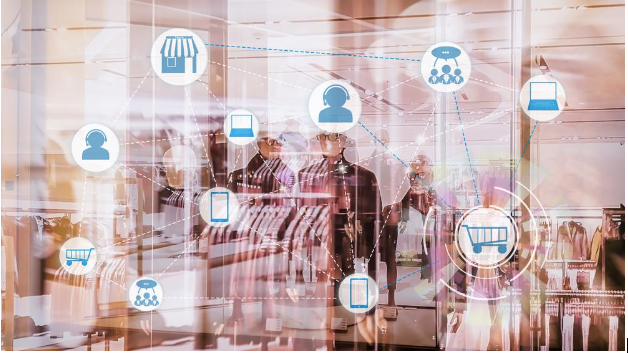Fostering a culture of appreciation and recognition is paramount for organizational success in today’s dynamic workplace environment. Hence, employee recognition programs have emerged as key drivers of employee engagement, motivation, and retention. As businesses strive to attract and retain top talent, they increasingly use innovative employee recognition strategies to differentiate themselves and create a positive work culture. In this blog, we delve deeper into the world of employee recognition programs, drawing insights from leading companies and exploring best practices for implementation.
The Significance of Employee Recognition Programs
Employee recognition programs are instrumental in acknowledging and rewarding employees for their contributions, achievements, and exemplary behavior. Hence, organizations reinforce desired behaviors and values by publicly recognizing employees’ efforts, increasing morale, motivation, and productivity. As a result, recognized employees are more likely to feel valued, engaged, and committed to their work, leading to higher job satisfaction and lower turnover rates.
Understanding Employee Engagement
Employee engagement is crucial for organizational success, as engaged employees are more productive, innovative, and customer-focused. Employee recognition programs play a vital role in employee engagement by fostering employees’ sense of belonging, purpose, and appreciation. Furthermore, recognized employees are more likely to go above and beyond their job responsibilities, contribute to a positive work culture, and act as brand ambassadors for their organization.
Exploring Employee Recognition Best Practices
Clear Objectives:
Define clear objectives for your employee recognition program, aligning them with the organization’s goals, values, and culture. Hence, clarify the behaviors and achievements that will be recognized, ensuring consistency and fairness in the recognition process.
Multiple Recognition Channels:
Offer multiple channels for employee recognition, including both formal and informal methods. While formal recognition programs, such as awards ceremonies and performance bonuses, are important, informal recognition, such as verbal praise and handwritten notes, can be equally impactful in reinforcing positive behavior.
Personalized Recognition:
Personalize recognition efforts to suit the preferences of individual employees. Consider factors such as personality, work style, and communication preferences when acknowledging employees’ contributions, ensuring that recognition resonates with each recipient.
Case Studies: Learning from Leading Companies
Google: Setting the Standard for Employee Recognition
Google is renowned for its innovative approach to employee recognition, which is deeply ingrained in the company’s culture. The tech giant emphasizes peer-to-peer recognition, encouraging employees to express gratitude and appreciation for their colleagues’ contributions through platforms like “GThanks.” Google also hosts regular recognition events, such as “Peer Bonuses,” where employees can nominate their peers for demonstrating exceptional performance or going above and beyond their job responsibilities.
Salesforce: Putting Employees First with Ohana Awards
Salesforce, a leading provider of cloud-based software, prioritizes employee recognition through its “Ohana Awards” program. Inspired by the Hawaiian concept of Ohana, meaning family, the program celebrates employees who embody the company’s core values, including trust, customer success, innovation, and equality. As a result, employees are encouraged to nominate their peers for demonstrating these values, with winners receiving recognition and rewards for their contributions.
Implementing Effective Employee Recognition Programs
Leadership Support:
Gain buy-in and support from senior leadership for implementing employee recognition programs, emphasizing the strategic importance of recognizing and appreciating employees’ contributions.
Employee Involvement:
Involve employees in designing and implementing recognition programs, soliciting their input and feedback to ensure programs are meaningful, relevant, and inclusive.
Continuous Evaluation:
Regularly evaluate the effectiveness of employee recognition programs, gathering feedback from employees and stakeholders to identify areas for improvement and refinement.
Insights from Industry Leaders: What We Can Learn About Employee Recognition
As we delve deeper into employee recognition programs, we must glean insights from industry leaders who have successfully navigated the complexities of the modern workplace. Here are some key lessons that leading companies teach us about crafting effective recognition strategies:
Celebrate Everyone’s Uniqueness
Leading companies in today’s diverse workplaces understand the importance of celebrating every team member’s unique contributions. Hence, by embracing diversity and recognizing individual talents, organizations create an inclusive culture where everyone feels valued and respected.
Use Tech to Make Recognition Easy
Gone are the days of handwritten notes and cumbersome recognition processes. Today, top companies leverage technology to streamline employee recognition. With user-friendly digital platforms, they can quickly and effortlessly acknowledge colleagues for their hard work and achievements, regardless of their location or role.
Make Recognition Match Your Company’s Heart
Effective recognition programs go beyond generic gestures; instead, they reflect the organization’s core values and identity. By aligning recognition efforts with company values, organizations not only reinforce cultural norms but also inspire employees to embody them daily.
Keep Feedback Flowing
Feedback is essential for personal and professional growth. Hence, successful companies prioritize regular feedback loops, providing employees with timely acknowledgment and constructive input. Consequently, by fostering a culture of continuous feedback, organizations empower employees to learn, grow, and succeed.
Invest in Growth
The best companies invest in their employees’ development, offering robust training programs, mentorship opportunities, and clear pathways for career advancement. Consequently, by investing in growth, organizations demonstrate their commitment to their employees’ success and fulfillment.
Cheer for Every Win, Big or Small
Celebrating big and small accomplishments is key to maintaining morale and motivation. Leading companies make a point of acknowledging every milestone, whether it’s a major project milestone or a small personal achievement. By creating a celebration culture, organizations cultivate a positive and supportive work environment.
Let Everyone Be a Recognition Rockstar
Recognition isn’t limited to managers praising their team members—it’s a team effort. Hence, successful companies empower all employees to recognize and appreciate their colleagues’ contributions, thereby fostering a sense of camaraderie and teamwork.
Keep Getting Better
Successful companies are known for continuous improvement. So, they regularly evaluate the effectiveness of their recognition programs and adjust strategies based on feedback and data insights. Consequently, organizations stay agile and responsive, ensuring their recognition efforts remain relevant and impactful.
Conclusion
Employee recognition programs are essential for creating a positive work culture where employees feel valued and appreciated. Consequently, they are motivated to perform at their best. Organizations can develop and implement effective recognition programs by drawing inspiration from leading companies like Google and Salesforce. As a result, they can drive employee engagement, retention, and organizational success. Moreover, companies prioritize employee recognition and embrace best practices, businesses can cultivate a workplace where employees thrive, contribute, and feel empowered to reach their full potential.
Would You Like a Free Consultation for Best Employee Recognition Program?




